This authentic Spanish flan is one of the easiest and most delicious Spanish desserts. Homemade flan is well worth making, and I hope you'll try it!
If you love Spanish desserts, make sure to try my recipes for Spanish tarta de Santiago and this arroz con leche.
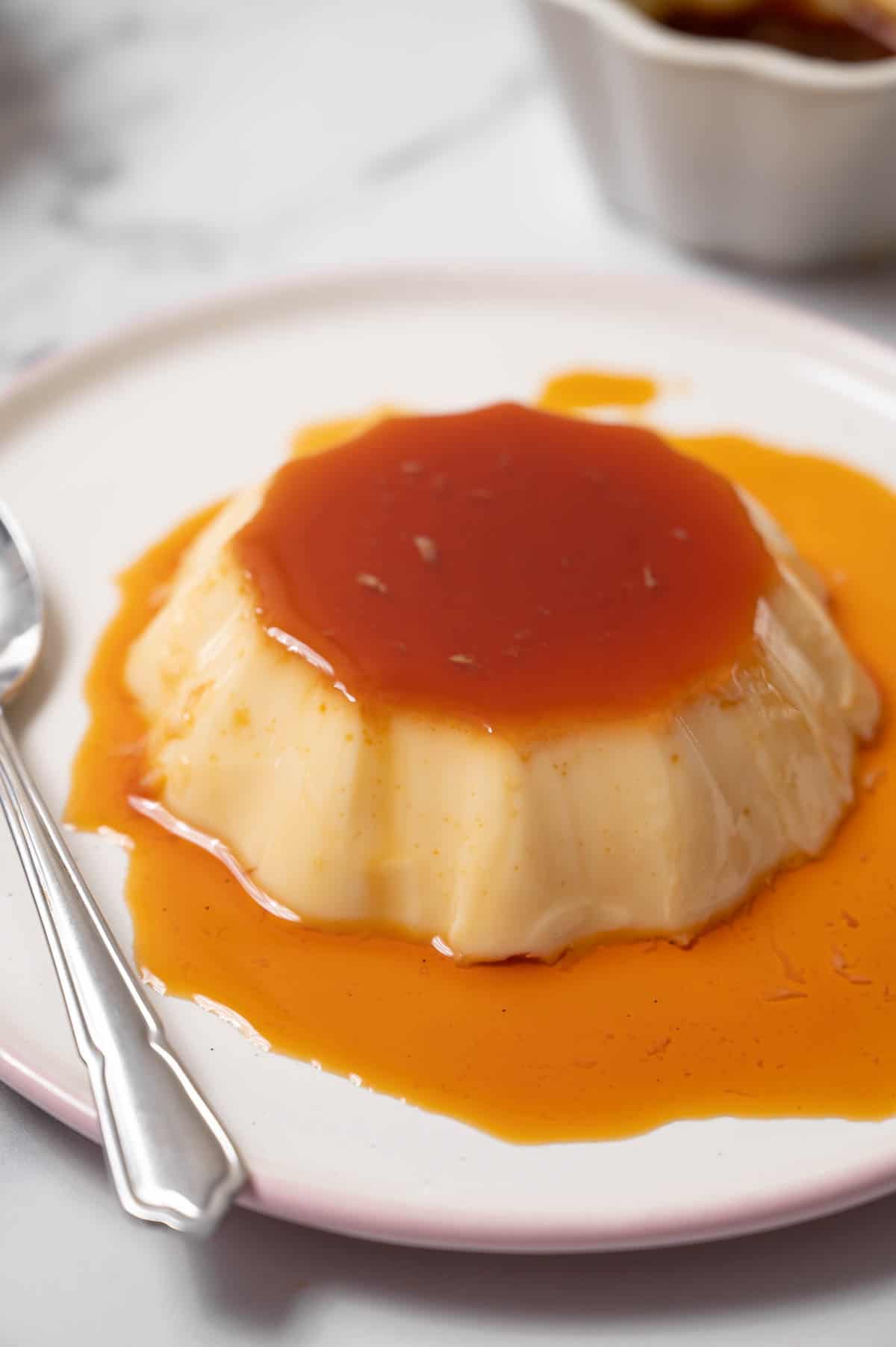
Jump to:
Intro
I hated flan when I first moved to Spain--I never understood all the hype about this mushy goo. But then I realized I hadn't been eating the right flan.
It was in a restaurant in Madrid where I decided to give flan one more try. To my surprise, the flavor of vanilla and caramel was delicious, and the texture was so silky smooth, I thought it would melt on my tongue. Now I understand why flan is one of the most popular Spanish desserts!
To this day, it was the best flan I've ever tried, and ever since, I've been trying to recreate it at home. This recipe is as close to the real thing as I've ever got! It's super simple (just four ingredients), and effortlessly delicious. The technique isn't hard, but it does take concentration and good timing to work with the sugar syrup before it hardens too much. Trust me, the final result is worth the extra focus!
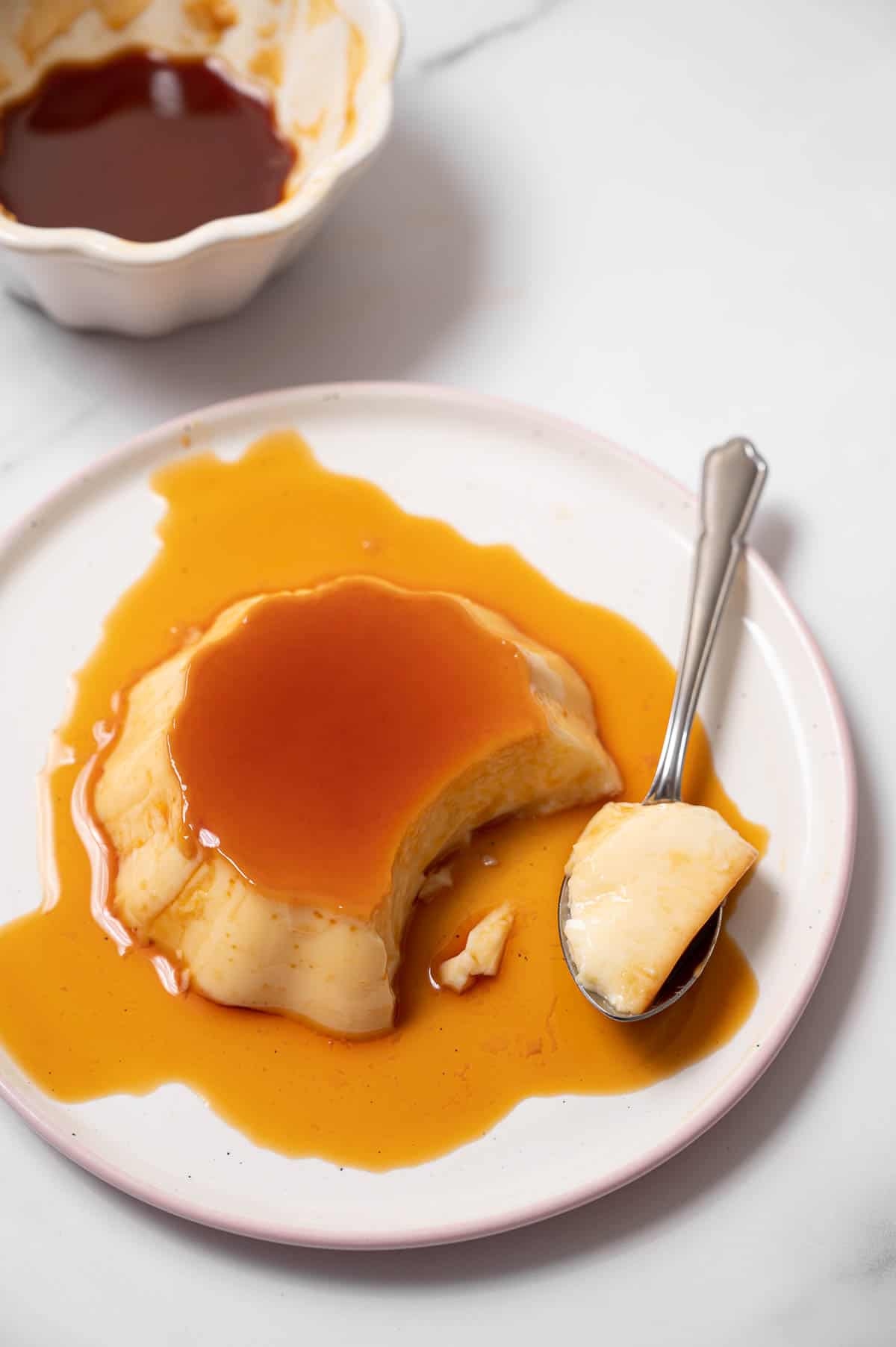
Why This Recipe Works
- This flan has the right texture. A good flan has the texture of a just-firm-enough custard. It should wiggle and jiggle on the spoon, and still be silky smooth when you bite into it.
- The caramel is cooked to the right color. A perfect golden caramel color is what you're looking for; any lighter or darker, and the flavor won't be good.
Key Ingredients
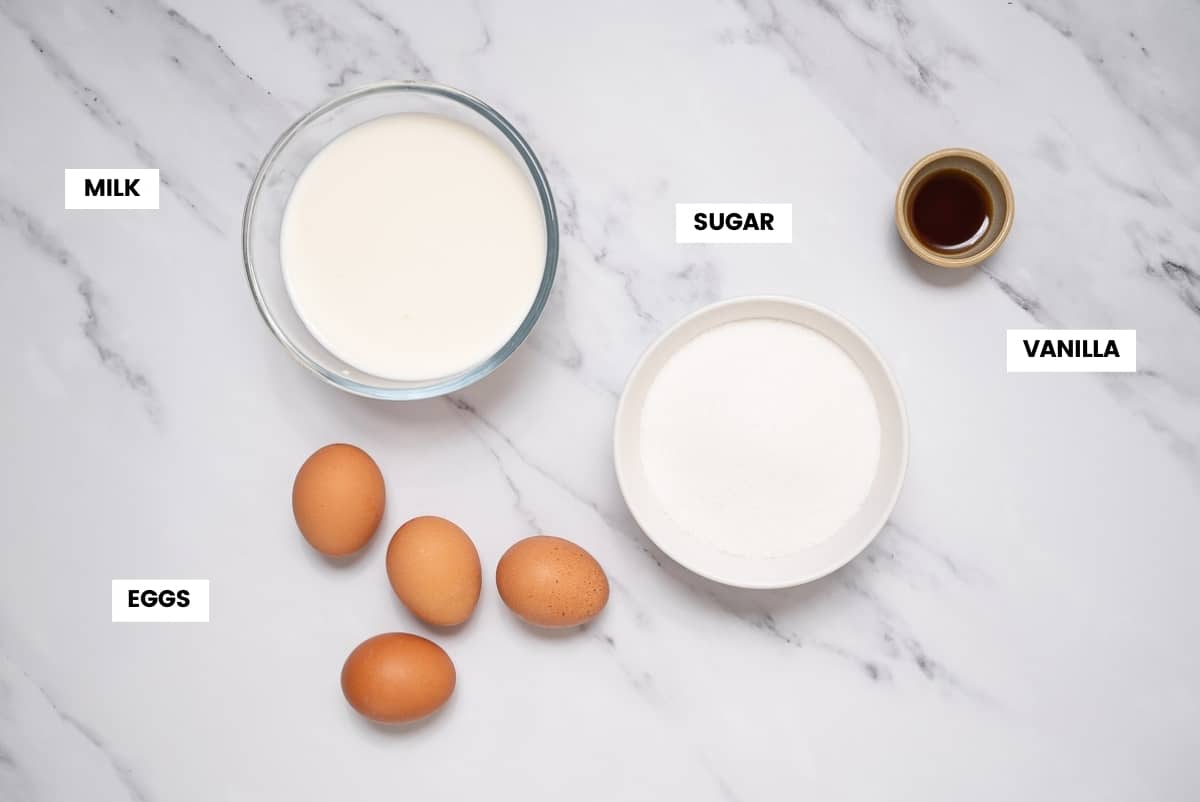
This flan only takes four ingredients, which means you can whip up this Spanish flan anytime you want to enjoy this authentic dessert.
- Eggs: Use room temperature eggs for this flan.
- Milk: Use whole milk here!
- Vanilla: I use top quality pure vanilla extract.
- Sugar: Granulated white sugar or caster sugar work equally well.
See recipe card for full information on ingredients and quantities.
Variations
- Eggs: This recipe calls for four large eggs, but you can experiment using a mix of eggs and egg yolks if you want a denser flan. For every full egg you omit, substitute two yolks.
- Milk: You can substitute part of the milk with heavy cream if you'd like.
- Vanilla: Instead of extract, you can use vanilla bean paste. Either one is delicious. If you want to omit the vanilla entirely, a tablespoon of citrus zest is the perfect substitution.
- Pumpkin Flan: Want an autumn twist to regular flan? Add pumpkin purée and warm spices to make this mouthwatering pumpkin flan.
How to Make
If you’d like to see the full ingredients and instructions, scroll to the bottom of the post for the printable recipe card.
Gather the ingredients for this authentic Spanish flan.
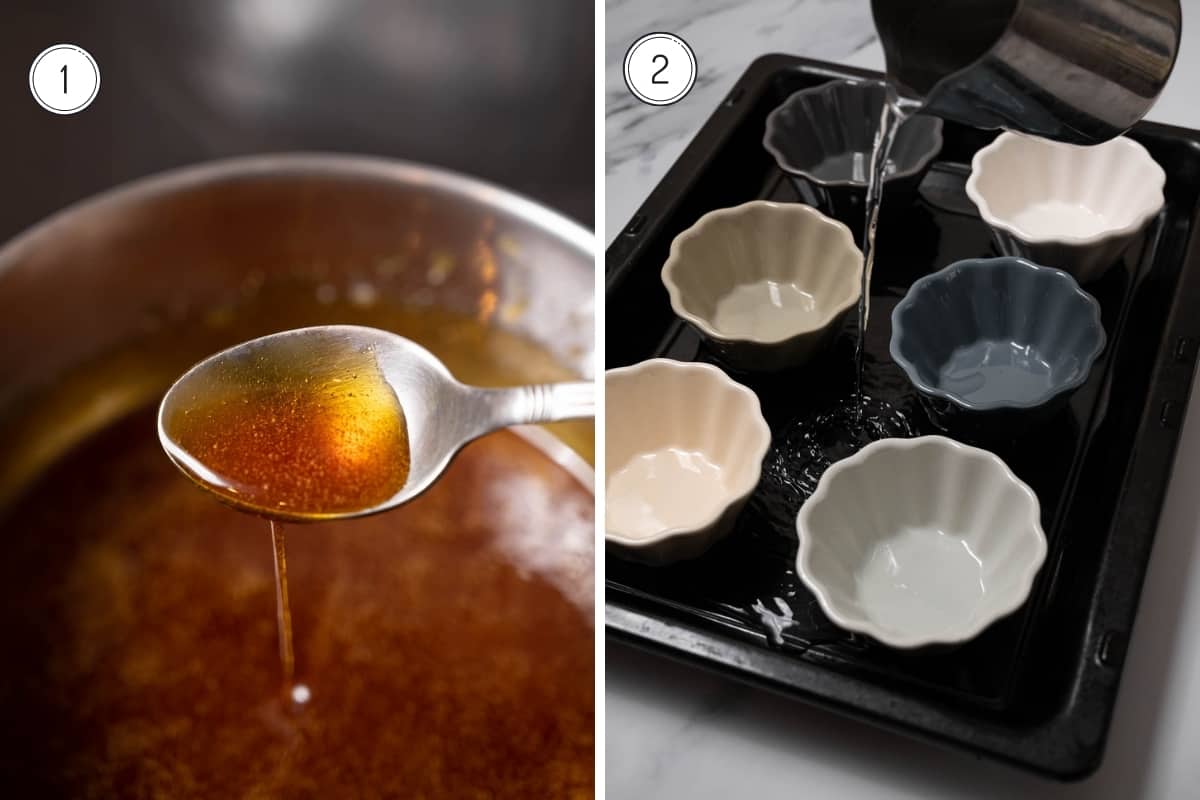
- Start by making the caramel. Put the sugar into a saucepan and heat over medium-low, stirring frequently, until it turns into a golden brown syrup.
- In the meantime, place your ramekins on a baking tray and surround them with hot water (bain-marie).
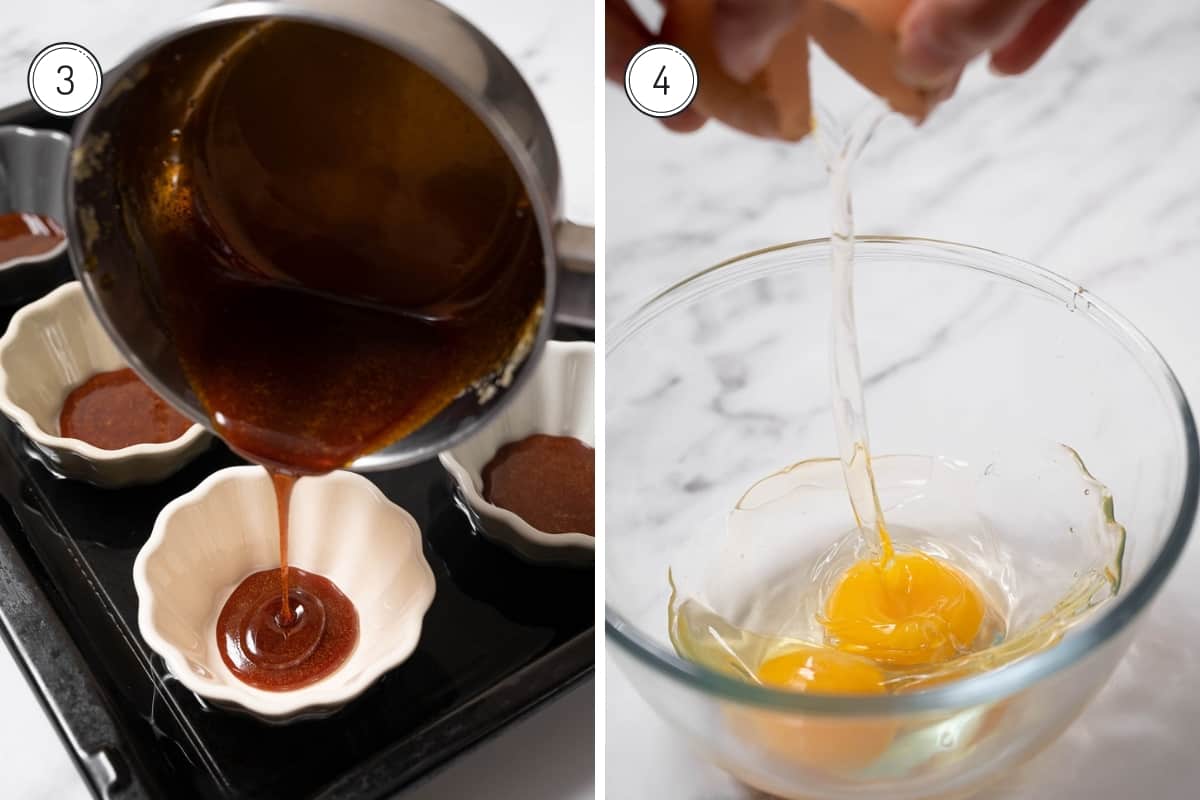
3. Pour the caramel into the ramekins.
4. Start making the custard by cracking the eggs into a large mixing bowl.
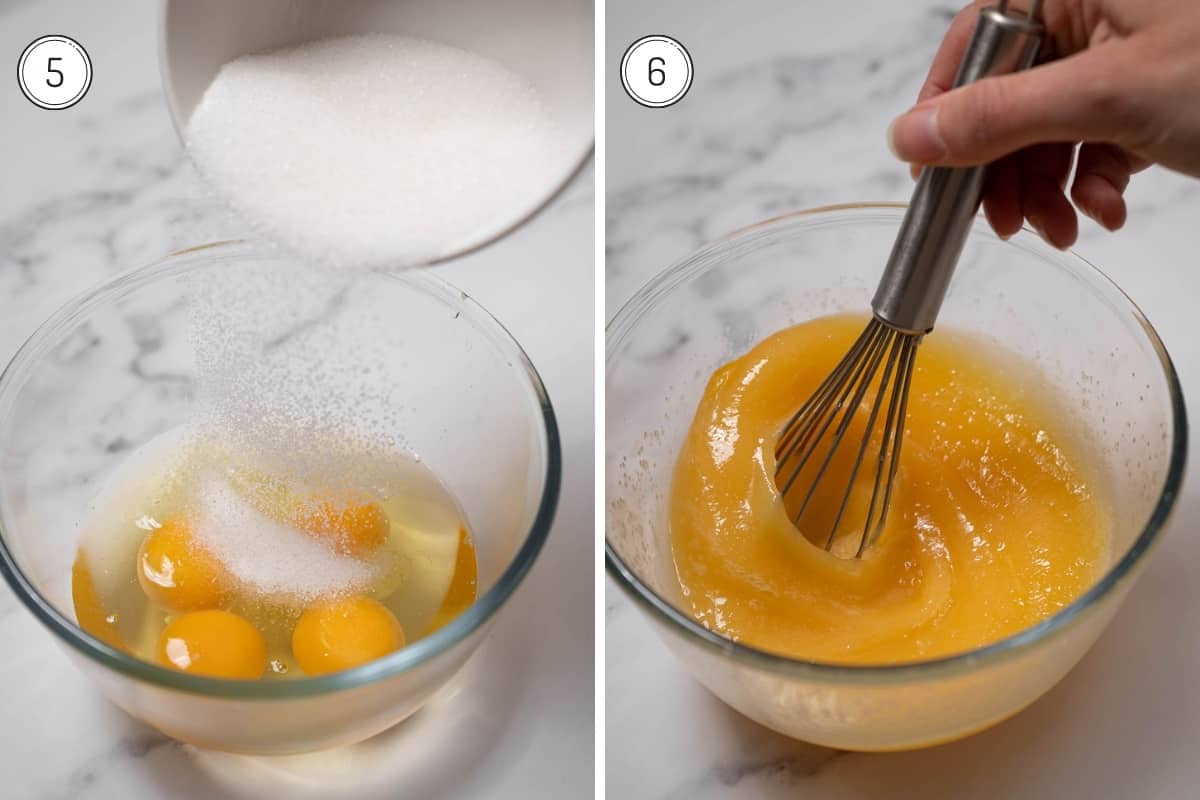
5. Add the sugar.
6. Beat until creamy.
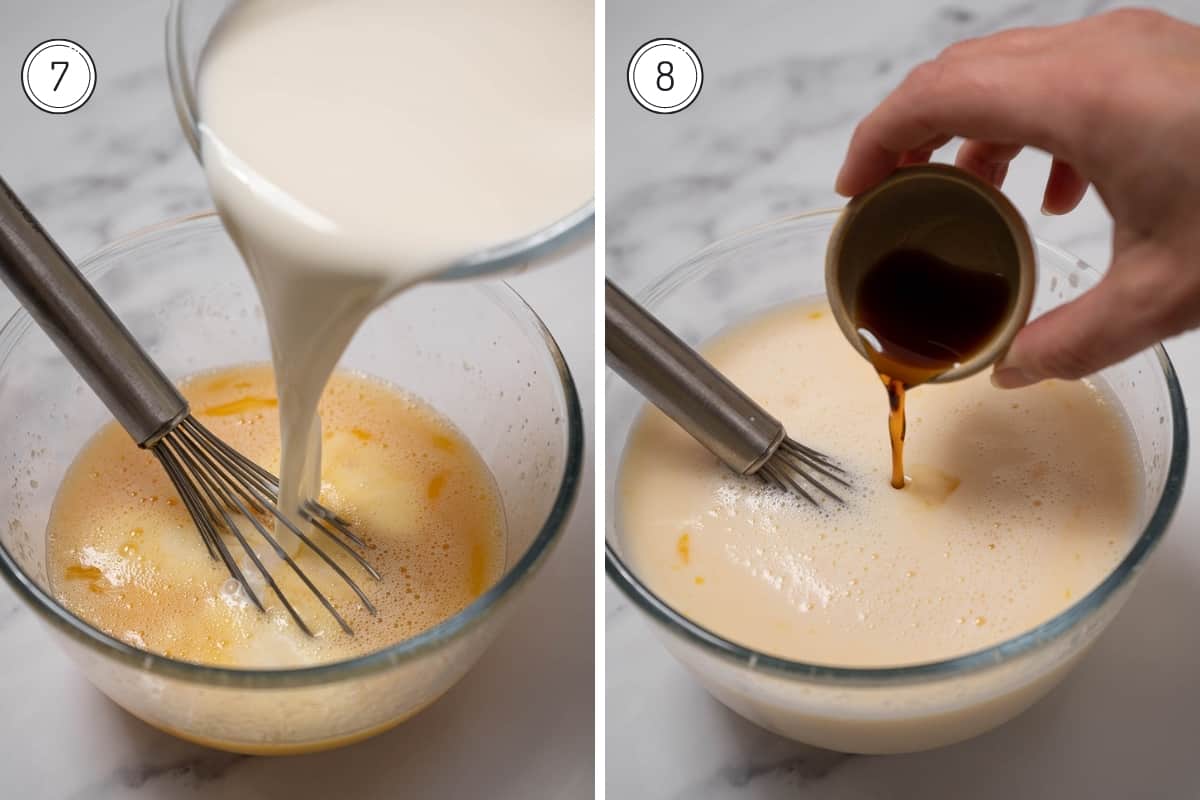
7. Pour in the milk.
8. Add the vanilla.
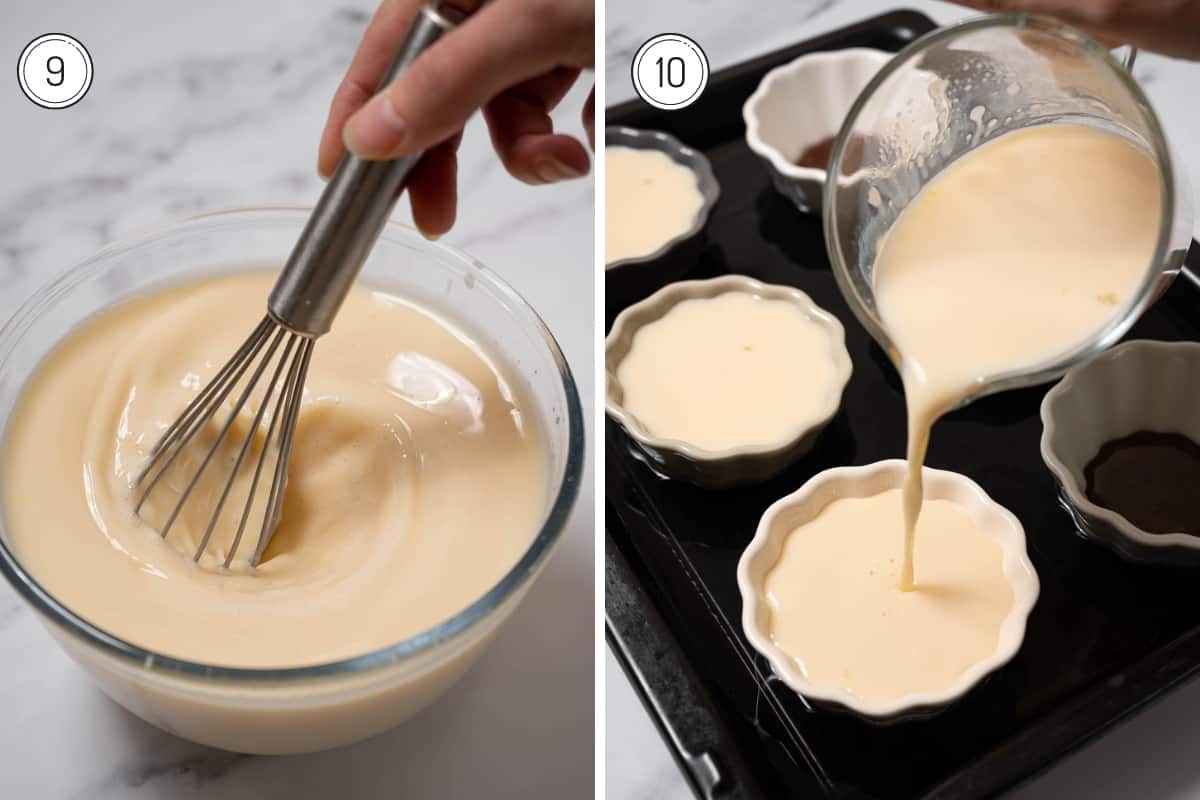
9. Mix until well combined.
10. Pour into the ramekins.
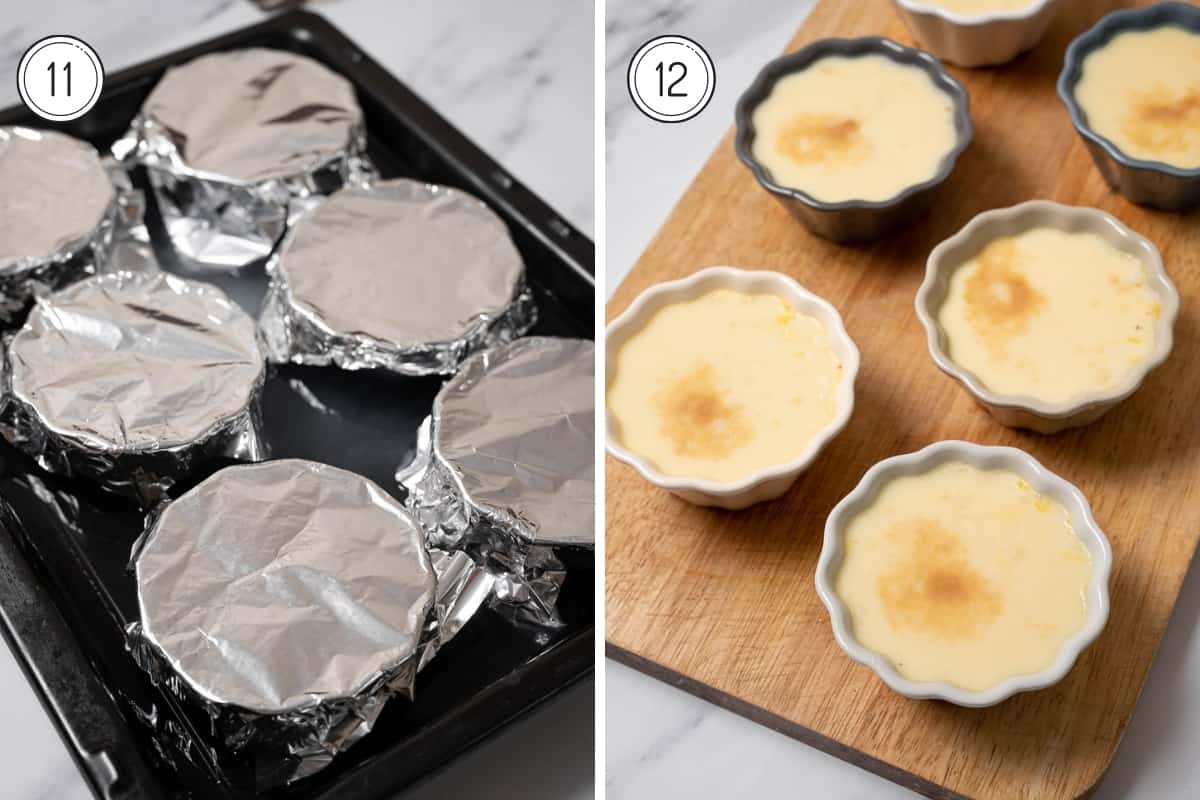
11. Cover with foil and put in the oven. Bake for about 40 minutes (until just set--the size of your mold will affect the time).
12. Remove them from the water and let them come to room temperature. Finally, put them in the fridge overnight (or for at least 6 hours).
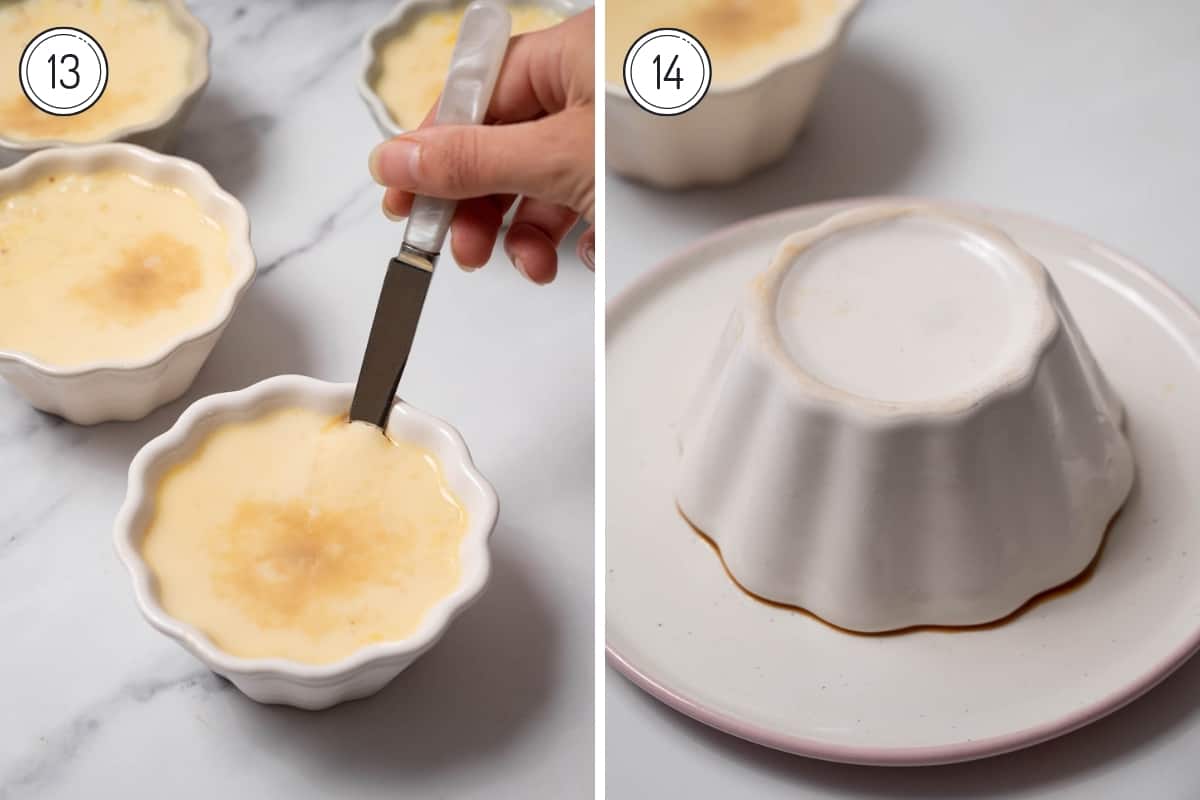
13. Finally, it's time to eat your flan! Remove the foil and run a butter knife around the edge of the mold.
14. Flip carefully onto a serving plate and enjoy!
Recipe FAQs
Mexican flan typically uses both the egg whites and yolks, while Spanish flans only use the egg yolks.
Flan originated in the Roman empire, where they made extra eggs into a delicious custard. The dish eventually made its way to Spain, where the caramel sauce was added to make it the flan we know and love today.
The most important difference between crème brulée and flan is the caramel topping. In crème brulée, the topping is hard and crunchy, while in flan, it becomes soft and sauce-like. To try Spain's version of crème brulée, try my recipe for crema catalana.
Serve
For an extra hit of acidity and sweetness, serve with fresh, tart berries. A generous amount of raspberries is especially tasty with it as well. Also, try serving it with other Spanish favorites, like Spanish hot chocolate and these Spanish buñuelos.
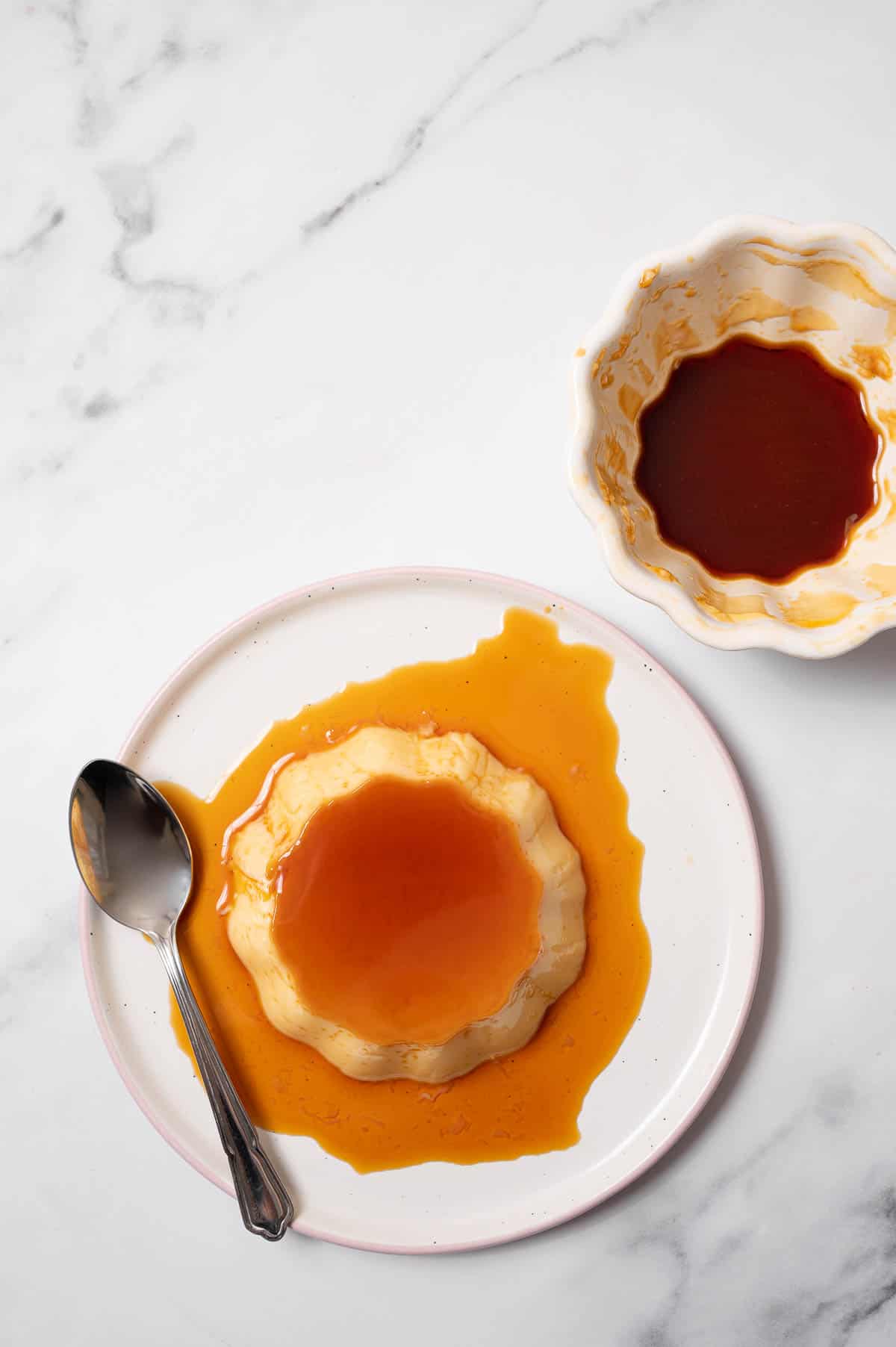
Store
Make Ahead: Flan must be made at least 6 hours in advance of its being served, as it needs to chill in the fridge. You can make it up to 2-3 days in advance, however.
Leftovers: Flan will keep for 2-3 days in the refrigerator. Make sure it's tightly covered to keep out odors.
Freezing: Yes, you can freeze flan! Scoop it into an airtight container or zip-top plastic bag, seal tightly, and freeze for up to 2-3 months. Defrost in the fridge before eating.
Expert Tips
- Bring the eggs and milk to room temperature before starting. This will help the mixture come together more evenly.
- Cook the caramel to the perfect golden brown color. Too light, and the flan will have no flavor; too dark, and it will taste burnt.
- Don't skip the bain-marie (hot water bath). This step is crucial to having evenly cooked, beautifully soft custard.
- Not sure if the custard is cooked through? Use an instant-read thermometer to check the temperature in the center; the flan is done when it reaches 175°F (79°C).
More Spanish Dessert Recipes
You must use the category name, not a URL, in the category field.If you liked this recipe, please share it with others!
Follow Spanish Sabores on Facebook, Pinterest, and Instagram for more recipes and travel tips.
If you've made and enjoyed this recipe, please leave a 5-star review!
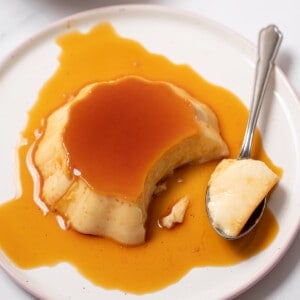
Authentic Spanish Flan Recipe
Ingredients
- 1 ½ cups granulated sugar (300g)
- 4 large eggs
- 2 cups whole milk (473 ml)
- 2 teaspoons vanilla extract (10 ml)
Instructions
- Preheat the oven to 300°F (150°C), and place six 6-ounce ramekins in a 9x13-inch pan with sides. Fill a kettle with water and keep it on the boil.
- Melt 1 cup (200g) of the sugar over medium-low heat until it is turns a golden caramel color, about 10 minutes. Avoid stirring the mixture, and watch it closely to prevent burning.
- Once the caramel is a good color, immediately remove it from the heat and quickly pour it into the ramekins. If it starts to harden, put it back on the heat until it softens.
- In a large mixing bowl, beat the eggs and remaining ½ cup (100g) of sugar until creamy. Add the milk and vanilla and stir until well combined.
- Divide the custard evenly among the six ramekins, pouring on top of the caramel. Cover each one with foil and place in the 9x13-inch pan.
- Fill the pan with boiling water halfway up the sides of the ramekins.
- Bake at 300°F (150°C) for 40-60 minutes, or until it jiggles when you lightly shake the ramekin. The flan is cooked when it has an internal temperature of 175°F (79°C) in the center.
- Take the ramekins out of the water-filled baking dish and set aside to cool to room temperature. Then place in the fridge covered with foil and chill for at least 6 hours (preferably overnight).
- To serve, take a butter knife and run it around the inside of the ramekin. Place a plate on top of the ramekin and invert it, then remove the ramekin to reveal the flan. Serve immediately.
Notes
- Feel free to use a larger mold, like an 8 or 9-inch cake pan, instead of smaller ramekins.
- Bring the eggs and milk to room temperature before starting. This will help the mixture come together more evenly.
- Cook the caramel to the perfect golden brown color. Too light, and the flan will have no flavor; too dark, and it will taste burnt.
- Don't skip the bain-marie (hot water bath). This step is crucial to having evenly cooked, beautifully soft custard.
- Not sure if the custard is cooked through? Use an instant-read thermometer to check the temperature in the center; the flan is done when it reaches 175°F (79°C).
Nutrition
Photography by Giulia Verdinelli


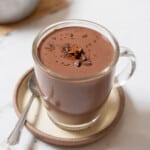
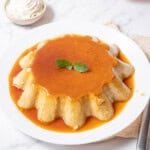
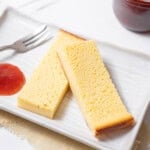
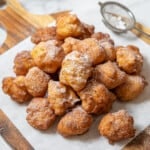
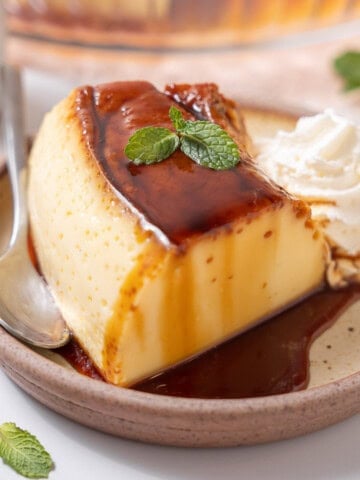
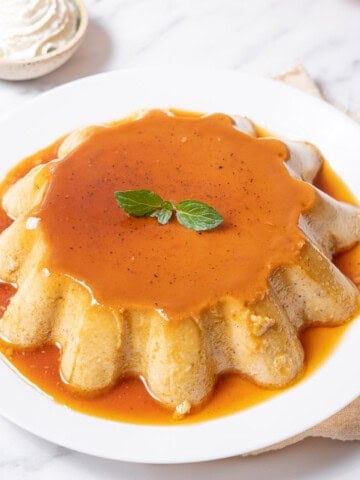
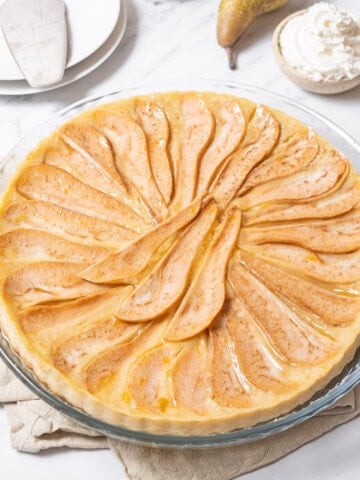
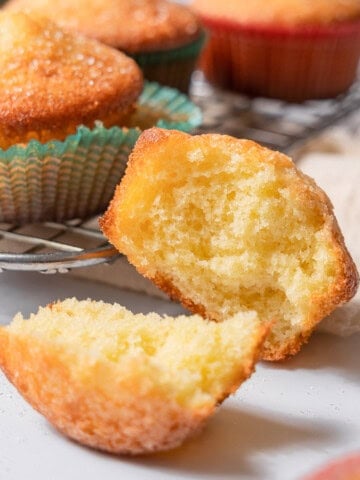
Kim H
What size mold/pan could you use if making 9 servings? I want to do this for my family, but don't have little ramakins.
Maria Vallejo
I wanted to find a recipe like my mother made...she never follow a recipe too closely but was an awesome cook! I learned to make flan from her but the texture was not what it could have been....flavor made up for some of that. I have learned to make it with a smooth, fine texture with your instructions. Room temp, no beating and a jiggle still 'there' when done!! I am so happy to have found your website as I still cook, as my mother did, aroz con pollo, aroz con leche, etc. etc. and Cipirones en su tinta!!! a favorite! Thank you so much and I look forward to your newsletters. Maria Vallejo
Helen
Hello! I'd like to make this for a party, but I'm not sure on the best way to transport it. Would you recommend scaling up the recipe and making it in a pan rather than individual molds? Also open to other Spanish desserts if you think they're better for parties. Thank you!
Kevin
I've never made flan or crème brûlée but wanted to give it a try for a dinner party I was hosting. I decided on this Authentic Spanish Flan recipe because the directions are clear and uses just a few simple ingredients. Because this is dinner for eight, I increased the ingredients by 1.5 to make 9 instead of 6. I ordered the 3/4 cup ceramic ramekins ahead of time. Unfortunately I did not have a baking dish big enough for 9 ramekins so I used a disposable heavy duty foil lasagna pan that I had on hand.
I proceeded to make the flan the afternoon before the dinner. After following this recipe very closely and putting the ramekins in the 300º F oven for 40 minutes, I checked one flan and it was still liquid. I left the flan in for an additional 20 minutes and they still were not done. I questioned if I used too much water, the water was not hot enough, the pan sides were too high, or even if my oven temp is not accurate. I increased the temperature to 350º and rechecked the flan after 15 minutes. The top of flan jiggled! I removed them from the oven and placed them in the refrigerator after cooling to room temperature.
The next morning, I tested the one extra flan and it was beautiful, just like the picture above! And it had the texture of a just-firm-enough custard. It wiggled and jiggled on the spoon, and was silky smooth. I'm sure it will be a hit this evening!
Bethany
Delicious and so easy! I messed up and didn’t cover it while cooking, and it still came out perfect!
Ayla
I can’t see to find what temperature to bake the flan at on here? Please help
C wensman
So delicious! But oh, what a lot of sticky cleanup
Therese
Needed a brief reminder on the caramelizing the sugar. I recovered but it was a little lumpy.
Just got back from Mexico so excited about serving the flan.
Alma
I always wanted to learn how to make flan. This recipe was easy to follow and resulted in the taste I was looking for - what flan tasted like as a kid in my mom’s kitchen ❤️❤️
Cat
This is better than I could have imagined!! Perfection! The second time I made it, I only used 1/2 cup sugar for the caramel topping and it hardly left any in the pan!! I made a flan loaf, lol. Thanks for the great recipe!!!
Pam
Can you use less sugar ?
josefa wann
I'm from Barcelona, now living in Southern California. At home we had flan very often, and your recipe is the only one that tastes just like my mother's! Thank you so much.
situ
This was delicious! I made this in an 8 inch cake pan and so much hardened caramel was left in the pan so I stuck the pan in a tray of hot water and cut the stuck caramel into shards and used it to decorate the top of the flan along with raspberries. Easy and impressive!
Halina Tabacek
Hi, I’m wondering how this flan recipe compares or differs from Crema Catalana. Can you comment on that? Thank you!
Lauren Aloise
The texture is very different. Crema Catalana is like a creamy custard -- a similar texture to yogurt. A flan is much more solid, similar to gelatin (though much more creamy). I hope this helps!
Robert Evans
James Michener described a famous recipe for flan in the Madrid chapter of his monumental book on Spain, Iberia. It can be found here, scroll down to page 366:
https://www.academia.edu/34833292/_James_A._Michener_Iberia_Spanish_Travels_and_Re_Bookos.org_-_Copy_2_4_